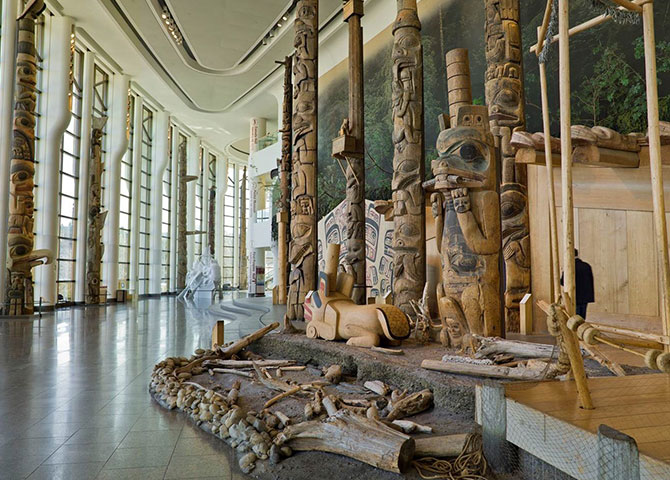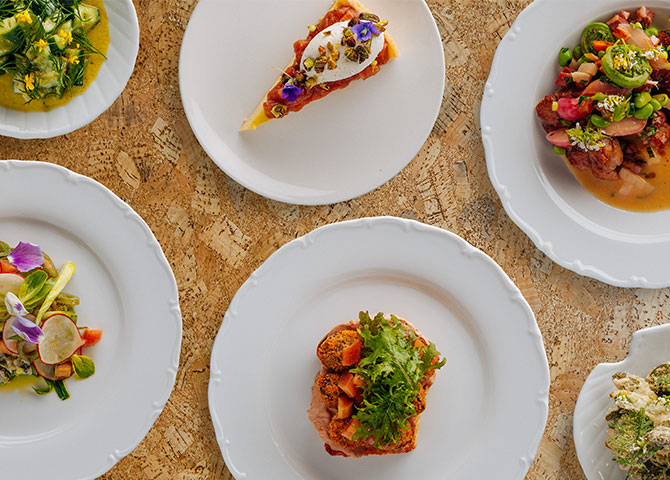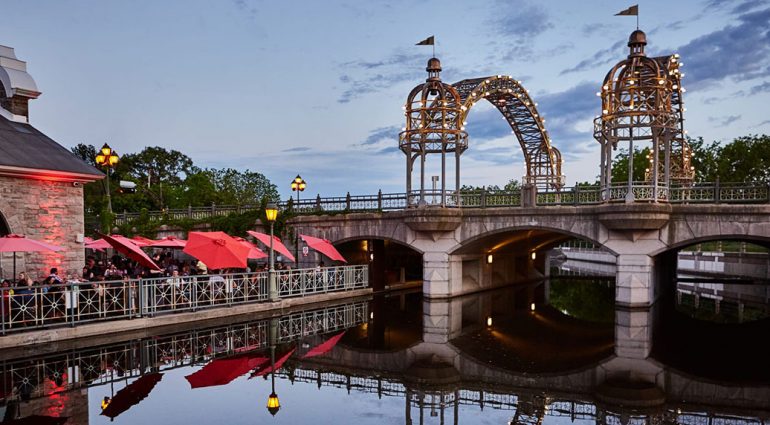After decades of Toronto living, my husband and I moved back to our hometown of Ottawa this month. We love the nation’s capital and our traditional lifestyle here. But our mistress city lies on the Quebec side of the Ottawa River—Old Hull (now part of Gatineau).
Our quiet walks in the gentrified shadows of an old industrial town, wonderful meals on terraces, and visits to spectacular indoor and outdoor cultural exhibits feel clandestine. Many tourists (and locals) who come to visit Ottawa have yet to discover the surprises that await them here. It’s only a matter of time.
Across the Alexandra Bridge
Many bridges lead to Hull. The Alexandra Bridge that begins beside the National Gallery of Canada is our favourite. One cannot stroll along the pedestrian boardwalk (there are separate lanes for people, cyclists and cars) without stopping to appreciate the unparalleled view—the river below dotted with undulating boats, the Neo-gothic style Parliament buildings behind, and the architectural masterpiece of the Canadian Museum of History straight ahead.

My last visit to the museum was well over a decade ago. While the totem poles of the First Peoples of the Pacific Coast in the Grand Hall stand majestic as ever, I am drawn to the newer galleries. At The Canadian History Hall (opened 2017) I’m fascinated by the six-inch incisor of a beaver from 20,000 years ago when they stood as tall as men. At the Medieval Europe gallery (opened this June), the carved ivory King from the Lewis Chessmen (circa 1150-1200) is very Harry Potter-esque.
Outstanding Restaurants in Hull
For many, the museum is the only reason they cross the river, but everyone should stay a little longer. Close by is a little slice of Europe. A pocket of Laval Street is closed to cars, making eating and drinking on the umbrella-lined terraces of historic brick buildings a quiet escape.
At Troquet, I savour my brie, prosciutto and apple baguette while co-owner Eric Gaudreault talks proudly about the work he and the other independent business owners (there are no chains here) are doing to create something distinct and colourful. “It’s not a vibe that’s easy to find,” he says.

Next to Troquet is Les Imposteurs, a creperie we try another day. We eat buckwheat crepes filled with wild mushrooms, blue cheese and snails, drinking cider beside an open wrought-iron balcony. From our vantage point, we take note of Aux 4 Jeudis across the street where I’m told the young and old mix easily over a pint, and watch movies and listen to music on the terrace all summer long.
For the perfect date night, we try Soif Bar À Vin (not far from Laval Street). We sit at a high-top table on the back terrace, surrounded by colourful planters of edible flowers, lettuce and herbs. Their wine list is unmatched, thanks to internationally renowned sommelier-owner Véronique Rivest. I’m grateful we’ve left just enough room, after sampling many delicious small plates, for dessert—a tart of lemon curd, strawberries, haskaps (a northern berry) and toasted fennel seeds.
Insider’s Tip: If you want to drink beer while learning about Hull’s history (during Prohibition, the city was a portal for smuggling), visit the beer museum at Les Brasseurs du Temps. For a non-alcoholic option, re-hydrate at CHA-YI teahouse (best iced tea ever).
Exploring Old Hull Neighbourhoods

While undergoing gentrification, Hull remains authentic to its working-class roots. A good example is on Hanson Street. La Filature, an artisan workshop and gallery, is housed in the old Hanson Hosiery factory, the old signage still visible on its brick façade. Adjacent are working class homes that lead to stately ones from the later 1800s and early 1900s, where captains of industry lived.
Continuing on our heritage walking tour, we stroll past the handsome 1800s stone Theatre de L’ile (Hull’s first water pumping plant) to the Ottawa River. We arrive beside the shuttered E.B. Eddy factory buildings, once a major employer in the pulp and paper industry. We rest for several minutes beside a contemporary sculpture (one of a few) to gaze across the river.
Although my husband and I grew up in Ottawa, we couldn’t believe that it took us this long to discover the real Hull. We won’t continue to make this mistake. We will get to know our secret city even more intimately in the months ahead.
More Hull tips for a great visit:
- Download the app: Go Centre-Ville
- Follow the Culture Trail (a thick red line on the sidewalk guides you to hot spots)
- Don’t want to walk? Take the water taxi from Ottawa.
Top image: Sentier Culturel (©Sebastien Lavallée)



